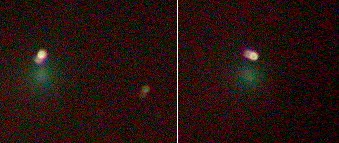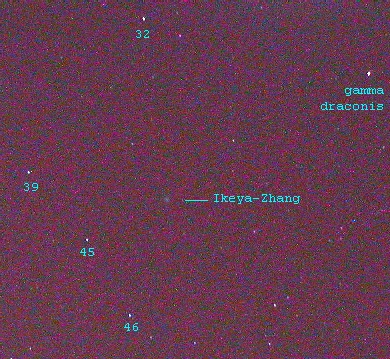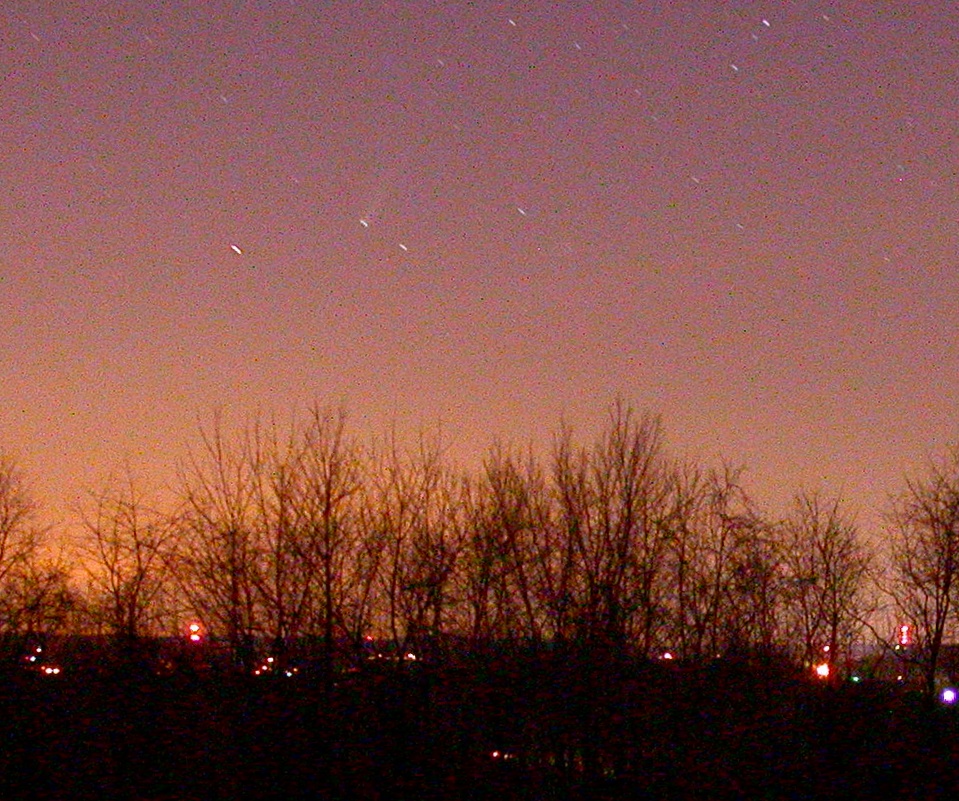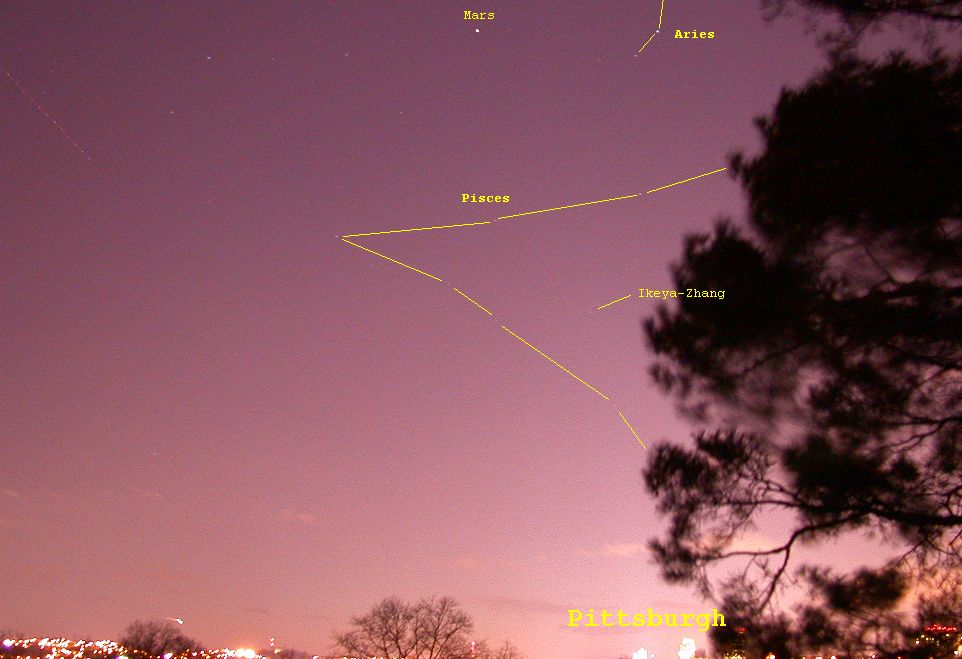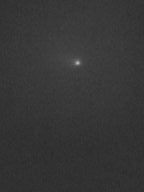2002/5/4 23:21 EDT. Comet Ikeya-Zhang through Tom Reiland's 5 inch f/5 refractor and 32 mm wide angle eyepiece. Photos taken with Nikon Coolpix
995 handheld at the eyepiece for 8 seconds. The comet is the green nebula, which was close to a 6 magnitude star at that time. No
tracking, a little bit shaking. Settings: F2.6, f8.2mm, ISO800.
2002/5/4 0:45 EDT. Ikeya-Zhang is much dimmer now. In binoculars no tail is visible at all, only a fuzzy round cloud. This photo is taken with Nikon Coolpix 995 from Squirrel Hill, Pittsburgh. The settings are: exposure 14.1s, F/3.5, f16.7mm, ISO800. Photo enhanced.
2002/5/4 0:45 EDT. A wider view. 17s, F/2.6, f8.2mm, ISO400.
2002/4/1 20:14 EST. Comet Ikeya-Zhang from Wagman observatory, Pittsburgh. It is getting closer to the Andromeda galaxy M31 (seen as a faint small patch at right center). Light pollution is evident. Picture taken with Nikon Coolpix 995 digital camera, settings: 60s on tripod, F2.6
f8.2mm ISO800.
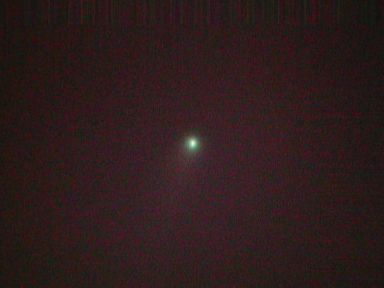 |
| Stack of 5 pictures. All 5 pictures were 1 to 2 second exposure, F11.9mm, f/3, ISO 800 |
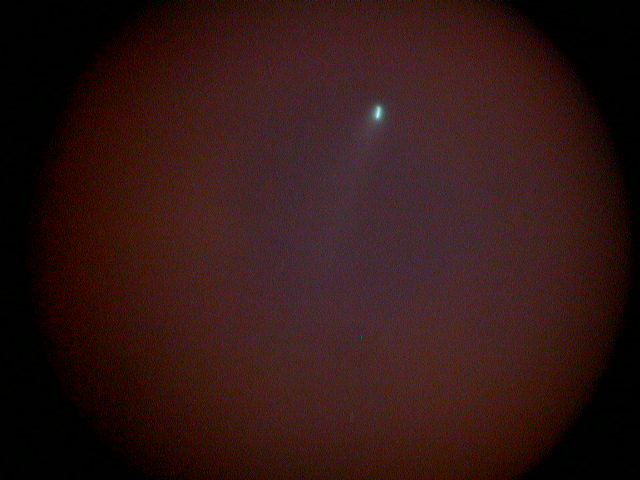 |
| A single picture exposed for 4 seconds. The comet has moved. F8.2mm, f/2.6, ISO 800 |
2002/3/13 19:15 EST. More Ikeya-Zhang pictures taken with afocal setting (through an eyepiece). 8"/f6 Dob + 25mm eyepiece + hand-held Nikon coolpix 995. Again from light polluted Squirrel Hill, Pittsburgh.
Ikeya-Zhang through Pittsburgh downtown light pollution. 2002/3/10 19:29 EST. Picture taken with Nikon Coolpix 995, f8.2mm, 16.4 sec, f/2.6, ISO 400. Despite of strong sky light, there was a short tail visible in binoculars.
A subtle tail about 1 degree long is visible in this telephoto picture (portion). 2002.3.10 19:35 EST Nikon Coolpix 995, 22.5 sec F/4.9 f28.8mm, ISO 400
2002/3/6 19:05 EST. First sighting. I didn't expect the comet to be so bright and easy. Observing condition: the sky was still lake blue, there might be a few thin clouds, and a sodium street lamp is only 10 yards from where I was! Even so, I found it as a fuzzy ball without effort with binoculars. No tail in binoculars. With my 8" Dob, however, a short tail was obvious, and I even managed to capture it with a household camcorder (see below). The comet has a strong green-blue hue.
 |
| Sketch: The comet under 135x magnification. |
Head quite blue. Bright large nucleus. A tail is visible pointing ENE, about 10'. The star at 2 o'clock has mag. 9.6, the double star at 4 o'clock mag. 11.1. Observed from Squirrel Hill, Pittsburgh with 8"/f6 Dob + 9mm eyepiece. Sky mostly clear with thin clouds, strong light pollution.
Left: I held a Sony camcorder to the eyepiece (8"dob+25mm), took a few seconds' video, digitized them, used Astrostack to average 30 frames.
Right: The left image is digitally enhanced (adjusting brightness/contrast/gamma) to bring out the tail.
